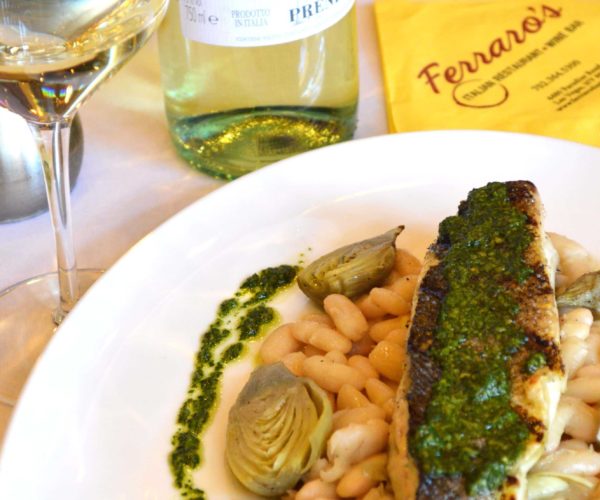Tips, Notes & Etiquette Newbies & Pros Can Use
A wine tasting event, be it a dinner at a restaurant or an in-store event hosted by a distributor or vineyard, is a great time to try new wines, mingle with various wine enthusiasts and develop your own curiosities and palate. That said, the wine tasting world has varied norms, customs and practices that can either be unknown or misunderstood to the budding aficionado.
We’ve put together this helpful infographic to help educate individuals of beginner, novice and expert wine-tasting status on how to get the most from your next wine tasting dinner!
Copy & Share
Understand What Types Of Wines Will Be Served
Having some background as to what you will taste will help you prepare your mind. It’s also good to do a bit of research going into the event.
Will the tasting focus on:
- Reds – Cabernet Sauvignon, Pinot Noir, Zinfandel
- Whites – Chardonnay, Sauvignon Blanc, Riesling
- Summer Selections – Rosé, Prosecco
- Regional Specific – Italian Wines, South American Wines, California Reds
- Specific Varietals (Grapes)– Cabernet Francs, Nebbiolos, Carignans
- Styles – Full Bodied Reds, Zesty Whites, Sparkling, Desert Wines
Learn Some Common Comparisons You Can Make
At a tasting, you’ll be trying a variety of wines, either of the same varietal or style, or from a multitude of grapes. Being able to understand the unique characteristics is important, but so is being able to compare wines against one another to derive meaning. Some basic comparisons you can look out for and note are:
- Is the wine dry or sweet
- Is a wine more “oak-y” in flavor or “naked,” (un-oaked)
- Is it spicy or peppery or does it have more jam like flavor
- Is it fruity or earthy
- Is it grass-y, citrus-y, or melon-y
- Is it overtly acidic or does it have balance
- Consider how a wine compliments food, or doesn’t at all
Important Notes Of Etiquette
To Spit Or Not To Spit?
If you’ve been to a tasting this may not be news to you, but for first timers, seeing people sip wine then spit it all out can be confusing and a little gross, perhaps. For those who are new to the tasting scene, don’t be alarmed – this is completely normal, especially if you’ll taste upwards of 6 – 7 wines in one sitting. Drinking all of the pour can, obviously, make you drunk. Not only is being drunk slightly irresponsible in a public setting, it can also dilute your taste buds and prohibit you from experiencing the full flavor from the wine. If you know you are a “lightweight,” feel free to spit! You won’t offend anyone; in fact, it can make you look like a wine tasting pro! Of course, if you are confident in your ability to consume alcohol, and it’s a tasting with only a few wines, enjoy every last drop.
Making Noises When Tasting
Tasting wine is a very audible experience. There will be slurping noises, sucking noises, heavy breathing. Does this sound raunchy, a little bit, but it’s all part of the passion that comes from experiencing a wine to the fullest! Again, you won’t be out of place making these sounds, but here’s how to execute them like a seasoned taster.
- Aerating the wine – this involves holding a sip of wine on your tongue, opening your lips slightly and sucking in air over top of the wine. Air “opens” up a wine, helping to release maximum flavor.
- “Chewing” the wine – It’s important to hold a sip of wine in your mouth for 5 – 10 seconds to fully taste it, activating every part of your tongues flavor receptors. When holding the wine in your mouth, perhaps after aerating it, people will often “chew” it, meaning they will make a chewing motion with their jaw, allowing the wine to move around and coat every part of their mouth. This is encouraged!
Don’t Mess With Smells In The Tasting Room
Sure, going to a wine tasting is often a somewhat formal affair. It’s classy and fun! However, don’t load up on strong cologne, perfume, scented hairsprays or gels, and don’t smoke your cigar or pipe near the tasting room. All of these outside scents can interfere with what is happening in the glass. Let the wine be the star smell of the night, not you.
Tasting With Style
Experienced wine tasters often have a tasting routine. This step-by-step process is common for analyzing a wine from multiple sensory angles – look, smell and taste. What’s the best ways to lock in on your wine tasting routine? Just remember this acronym: L,S,S,S
- Look – When the wine is poured into your glass, hold it up to the light or a light wall and study its color, which can reveal a lot about the varietal (in a blind tasting) and quality of the wine.
- Swirl – You know when you see people swirling wine in their glass? That’s not for show or because they are bored, that is another way to aerate the wine. Swirling stirs air into the wine, unlocking deep aromas. After swirling, stick your nose in the glass and breathe deep, taking in all the glory of the wine, noting what you are experiencing through this process.
- Sip – After observing and smelling, it’s time to sip. Practice your chewing and sucking in air over the wine! Note how the wine changes from your first sip to your second. Write down the flavors you are tasting. Does it taste like a fig, a blueberry, a bonfire, a mushroom, a gym sock, a cantaloupe, fresh cut grass? Nothing is off limits! Every human has different taste buds. Use your imagination and free associate the flavors you are experiencing. After everyone has tried the wine, compare what your thought. There could be a lot of common ground, or a lot of difference in opinion – the conversation will flow!
- Savor – After sipping, forming your opinion and discussing with your peers, put those notes aside and simply savor the wine. Enjoy a few more sips with a clear head and no pretense.
Tasting Wine With Food
Many wine tasting events are often part of a dinner, where select wines are paired with chef-driven creations. These are often the most fun and fulfilling types of tastings, as you can enjoy a meal and, typically, the whole glass of wine without spitting. The play between food and wine though can start muddying the waters, especially for a beginner wine taster. Continue to go through all the steps above, but also pay attention to what the host or chef has to say. Let their experience guide your palate in a way so you can zero in on what flavors and subtleties are being highlighted. But always remember this, wine and food should compliment one another, not compete. If one element is overpowering the other, make note and enjoy them separately (finish the course before returning to the wine).
Join Us At Ferraro’s For Select Wine Tasting Events
Ferraro’s Italian Restaurant & Wine Bar is committed to educating our customers about the pleasures of wine and food. We host select tasting events every month. If you’d like more information about our tastings, please contact us. Cheers!





Excellent infographic. I like the part “SIP” – JUST Sip some wine and relax :*
High-quality write-up. Thanks a ton for sharing.
My wife and I really like to go to wine tasting, but we are not really experts about it. We just like to go and taste a lot of wine and have a good time. I am going to pull out some of these tricks next time. I will look like a pro. I really like how you say to look at the wine before you drink it. I am gonna look like such a pro on our next weekend out.
Understandable presentation by infographic . It’s nice , thank you very much